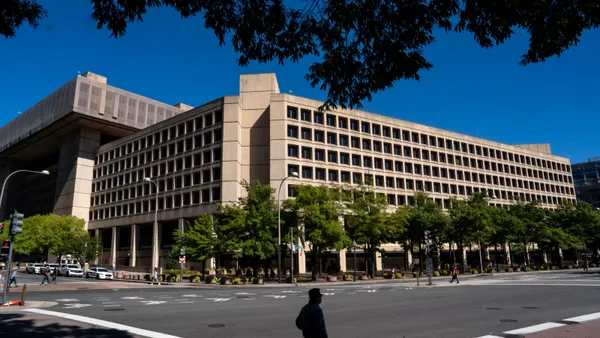Dive Brief:
- Legislation that would phase out fluorescent lighting has passed the Illinois State Senate and House of Representatives on May 24. The bill has been sent to Gov. J.B. Pritzker for approval.
- If signed into law, HB 2363, or the Clean Lighting Act, would mandate swapping fluorescent lighting over time for highly efficient LED bulbs, which could avoid 2.2 million metric tons of carbon dioxide emissions through energy waste reductions, generate over $1.5 billion in savings on utility bills, and prevent 419 pounds of mercury pollution by 2050, Illinois Public Interest Research Group said in a news release May 24, citing an analysis by the Appliance Standards Awareness Project.
- If Pritzker approves the bill, Illinois would become the tenth state to pass clean lighting policies, following similar legislation passed by Minnesota recently, Illinois PIRG said.
Dive Insight:
The Clean Lighting Act in Illinois would prohibit screw-base or bayonet-base compact fluorescent lamps from being sold or distributed as new manufactured products on or after Jan. 1, 2026, according to a document outlining the legislation. The bill also bans the sale and distribution of pin-base compact fluorescent lamps or linear fluorescent lamps as new products on or after Jan. 1, 2027.
Utilities may offer energy efficient lighting, rebates or lamp recycling services, however, or claim persisting energy savings based on fluorescent technology resulting from such programs through energy conservation and optimization plans under certain provisions approved by the Illinois Commerce Commission, the bill says.
The fluorescent lamp ban seeks to reduce human exposure to mercury, a persistent and toxic pollutant that bioaccumulates in the environment, according to a bill document filed in April. All fluorescent lamps contain mercury and can create immediate public health and environmental hazards when accidentally broken during installation, use, transportation, storage, recycling or disposal, the document notes. Light-emitting diode replacements for fluorescent lamps do not contain any mercury, it says.
Furthermore, three in four fluorescent lamps are not discarded properly, putting waste stream workers at risk of overexposure to mercury, per the release from Illinois PIRG. The research group noted that the 419 pounds of mercury that could be prevented from entering the Illinois waste stream is sufficient to contaminate over 20 billion gallons of water.
“The Clean Lighting Act is a clear winner – it will save consumers money, cut energy waste, and remove a persistent neurotoxin from the Illinois waste stream,” State Sen. Adriane Johnson, one of the bill’s sponsors, said in a statement.
The utility bill savings that result from switching to LED fixtures are “clear and overwhelming,” Illinois PIRG said, noting that a typical small office can save as much as $900 a year while an average school can save $3,700 annually.
LED lights can also last up to 25 times longer, the U.S. Energy Information Administration says.
LED lighting also halves energy use, compared with fluorescents, and typically cost less to purchase and operate over their lifetime, according to the Appliance Standards Awareness Project. For example, LED lamps can be up to 44% more efficient than 4-foot fluorescent tubes in linear recessed lighting systems, a December 2023 University of Michigan study found.
Vermont and California become the first states to phase out the sale of most fluorescent bulbs in 2022. Other states, including Oregon, Hawaii, Maine, Colorado and Rhode Island, adopted similar policies last year, according to ASAP.
Meanwhile, Minnesota will end the sale of fluorescent lamps, effective on Jan. 1, 2025, for screw- or bayonet-based compact fluorescents and on Jan. 1, 2026, for the pin-base linear or compact fluorescent lamps. That legislation was signed into law by Minnesota Gov. Tim Walz on May 21.














